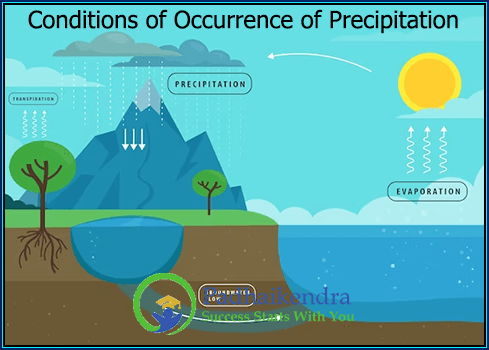Precipitation occurs when atmospheric water vapor condenses into liquid or solid forms and falls to the Earth’s surface. Several conditions must be met for this process to occur, including temperature, humidity, and the presence of condensation nuclei.
Temperature plays a crucial role in determining the form of precipitation that occurs. Rain typically forms when temperatures are above freezing, and liquid water droplets combine to form larger drops that fall to the ground. Snow, on the other hand, forms when temperatures are below freezing and water vapor in the atmosphere freezes into ice crystals. Sleet and freezing rain occur when the temperature near the ground is below freezing, causing liquid precipitation to freeze on contact with the surface.
Humidity is another critical factor in precipitation occurrence. As the temperature rises, the air can hold more moisture, increasing the likelihood of precipitation. When the humidity reaches 100%, the air is said to be saturated, and precipitation is more likely to occur.
Condensation nuclei, which are tiny particles in the atmosphere such as dust, pollen, or salt, also play a role in precipitation occurrence. These particles provide a surface for water vapor to condense on, helping to form clouds and precipitation.
In addition to these general conditions, the occurrence of precipitation can also be influenced by a variety of other factors, including air pressure, wind patterns, and topography. For example, air pressure systems can cause air masses to rise and cool, leading to precipitation formation. Wind patterns can also transport moisture from one region to another, influencing precipitation patterns in different areas.
Topography can also have a significant impact on precipitation occurrence. Mountains, for example, can cause moist air to rise and cool, leading to increased precipitation on the windward side of the mountain and decreased precipitation on the leeward side. Coastal areas can also experience increased precipitation due to the influence of ocean currents and the presence of moisture from the sea.
In conclusion, precipitation occurrence is influenced by a variety of factors, including temperature, humidity, condensation nuclei, air pressure, wind patterns, and topography. By understanding these conditions and their interactions, meteorologists can better predict precipitation patterns and help communities prepare for potential weather-related hazards.





